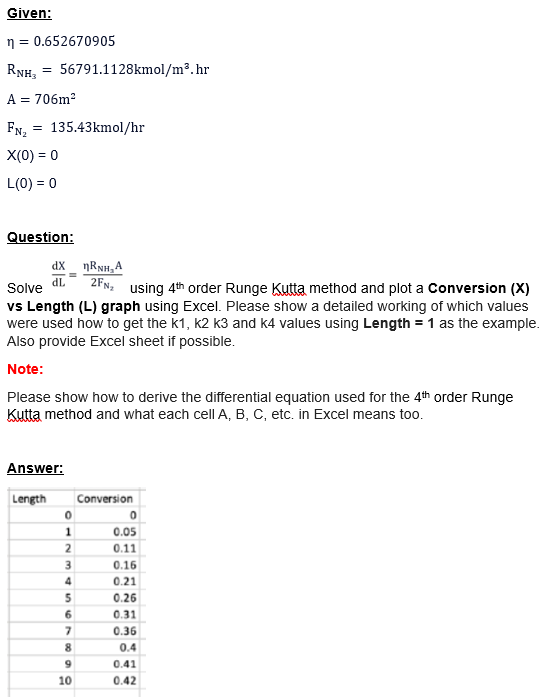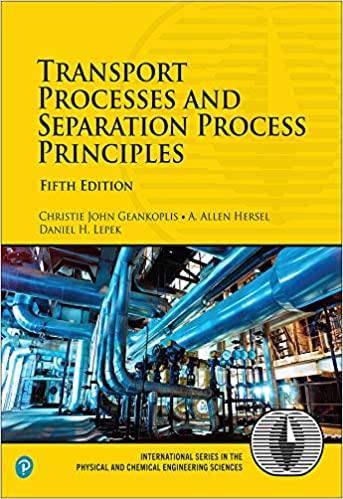Answered step by step
Verified Expert Solution
Question
1 Approved Answer
I just can't seem to get the my X = 0.05 when Length = 1. Using step size L of 1. My k1, k2, k3,

I just can't seem to get the my X = 0.05 when Length = 1. Using step size L of 1.
My k1, k2, k3, k4 are:
k1, k2, k3, k4 = 1*(0.65267*56791.1128*706/2*555.87) = 9.661*10^4
T1 = 0 + 1/6*(9.661*10^4 + 2(9.661*10^4) + 2(9.661*10^4) + (9.661*10^4)) = 9.661*10^4
this clearly isn't 0.05 so pls help. If the differential equation I use to find my k1, k2, k3, k4 is wrong, can show how to derive the correct one and redo everything again.
=0.652670905RNH3=56791.1128kmol/m3.hrA=706m2FN2=135.43kmol/hrX(0)=0L(0)=0 Question: Solve dLdX=2FN2RNH2A using 4th order Runge Kutta method and plot a Conversion (X) vs Length (L) graph using Excel. Please show a detailed working of which values were used how to get the k1, k2 k3 and k4 values using Length =1 as the example Also provide Excel sheet if possible. Note: Please show how to derive the differential equation used for the 4th order Runge Kutta method and what each cell A, B, C, etc. in Excel means tooStep by Step Solution
There are 3 Steps involved in it
Step: 1

Get Instant Access to Expert-Tailored Solutions
See step-by-step solutions with expert insights and AI powered tools for academic success
Step: 2

Step: 3

Ace Your Homework with AI
Get the answers you need in no time with our AI-driven, step-by-step assistance
Get Started


